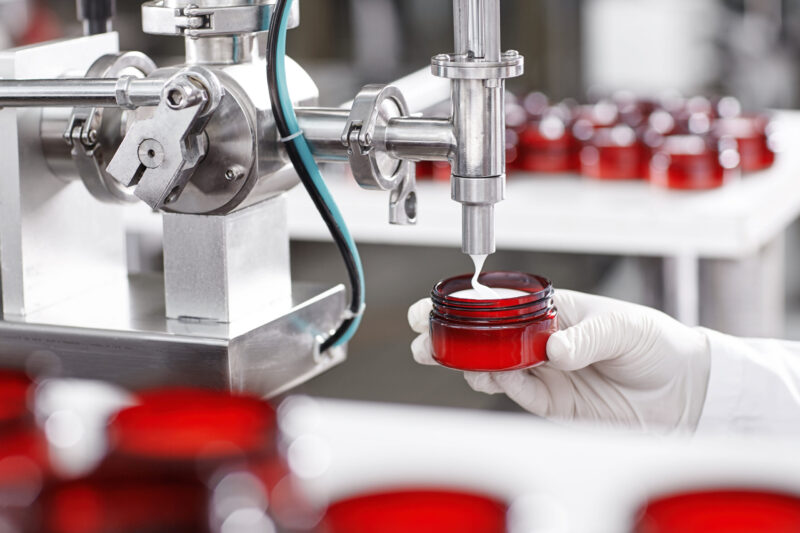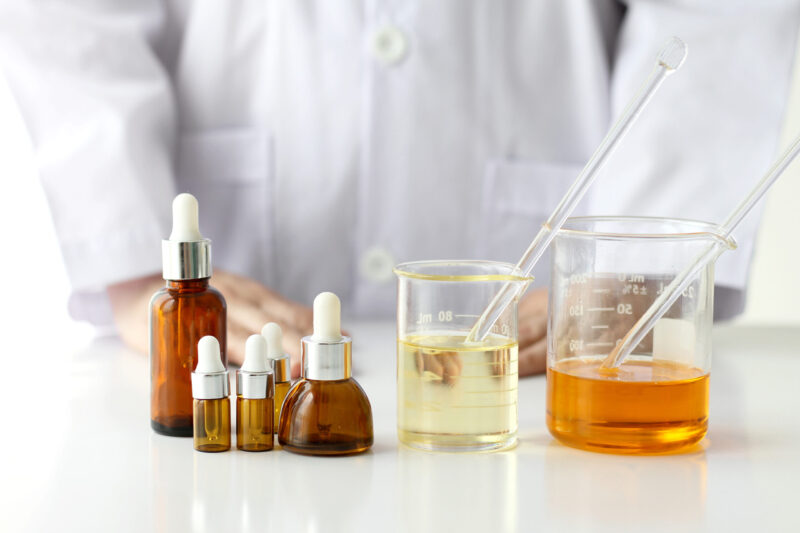
This site
is mobile
responsive

The rise of social media has transformed the beauty industry fostering a culture where cosmetics and personal care products are not just essentials but also key components of self-expression and identity. Platforms like Instagram, TikTok, and YouTube have propelled beauty influencers and trends into the spotlight, encouraging consumers to experiment with an array of products to achieve the latest looks. This surge in visibility and accessibility has not only amplified the demand for cosmetics but has also spurred an increase in the production of cosmetics and care chemicals worldwide.
The cosmetics and care chemicals segment which features a diverse array of ingredients such as emollients (e.g., squalane), surfactants (e.g., sodium lauryl sulfate), UV filters (e.g., zinc oxide), preservatives (e.g., parabens), and colourants, is a cornerstone to the cosmetics and personal care sector. Each type of chemical plays a vital role in enhancing product texture, stabilising formulations, and providing essential protection for the skin.
Globally, the cosmetic chemicals market is estimated to grow at a compound annual growth rate (CAGR) of 5.11%, potentially reaching over USD20.28 billion by 2029. Factors driving this growth include the rising demand for premium personal care products, clean beauty, and ingredient transparency, particularly in regions like North America, Europe, and the Asia-Pacific. The global downstream care market, on the other hand, is projected to grow by 80% by 2030, fueled by key megatrends such as the expanding middle class and increasing consumer awareness of health and beauty. Asia will lead significant demand for growth, securing a third of the global market. Key trends in personal care, as well as a shift towards natural and sustainable products, will assume a pivotal role in shaping the future of the cosmetic chemicals industry.
The positive outlook is set to benefit Malaysia, a leading oleochemical producer. Malaysia stands to capitalise on the increasing demand for sustainable and natural ingredients with its eco-friendly and high value chemical products to meet the evolving needs of consumers worldwide. Malaysia produces approximately 19 million metric tons of palm oil annually, supplying a steady stream of sustainable raw materials for oleochemicals, which are widely used as base ingredients in cosmetics. Local companies have made significant strides by refining oleochemicals to create high-quality, export-ready products that meet international standards. The Malaysian oleochemical industry contributed around USD2.4 billion to the country’s exports in 2022, highlighting its impact on the economy and the potential for growth within the cosmetic chemicals sector.
Local Malaysian companies with its expertise in the oleochemical sector stand a chance to reap the benefit of the care chemical boom. However, to stay competitive, Malaysian companies are encouraged to strengthen partnerships with academic institutions and government agencies, fostering a collaborative approach to innovation. Additionally, investments in refining technology and enhancing supply chain transparency will be crucial for sustaining growth and attracting global beauty brands.
One prominent local champion that helped to position Malaysia as a global competitor in the field of specialised natural-based fatty esters is Cidols Sdn. Bhd. This local small and medium enterprise (SME) is a true success story of Malaysia that reflects how innovation and call for sustainability enabled this local enterprise to penetrate the saturated cosmetics chemical segment and compete with the Goliaths of the industry. Cidols, in 2023, inaugurated a pioneering plant specialised in producing niche and tailor-made fatty esters stamping its role in Malaysia’s downstream oleochemicals industry.
The company’s journey to success is through its efforts in strategic investments, sustainability focuses and the ability to adapt in response to global trends which is gravitating towards bio-based products. Cidols made a bold move in investing and leveraging on advanced technology to produce high purity specialty esters and through this technology, the company diversified its production of esters such as Glyceryl Mono Caprylate, Glyceryl Mono Oleate, Isoamyl Laurate, and Isostearic esters enabling it to expand into high-performance downstream products derived from glycerin.
Today, Cidols has expanded its market presence supplying over 30 countries, including Japan, South Korea, China, South Asia, Southeast Asia and the Middle East. While this success continues, the commitment of the company to invest in a sustainable future has not been shelved. Cidols has broadened its optics into bio-based chemicals leaping into the development of palm-based lubricant, free from mineral oil hydrocarbons. This strategic shift designed to mitigate mineral oil contamination in palm oil products, creates new opportunities for Cidols in targeting new customer segments in high-demand cosmetics and personal care industries.
Recognising the abundant opportunities within the cosmetics and personal care industry and Malaysia’s potential in it, the CIR 2030 for Malaysia sets a vision to establish the country as a leading hub for chemical solutions, particularly in the Care Chemicals segment. With the global market for Care Chemicals projected to reach approximately USD102.0 billion by 2025, Malaysia’s emphasis on this sector aligns seamlessly with the rising global demand. The CIR outlines key strategies for growth, including promoting sustainability, supporting research and development, and enhancing regulatory frameworks. This comprehensive roadmap aims to cultivate a thriving Care Chemicals sector by leveraging Malaysia’s strengths in production and innovation.
Specialty care chemicals which involve high complexity as well as oleochemicals are promoted products for consideration of Pioneer Status or Investment Tax Allowance under the Promotion of Investment Act, 1986. To know more about how MIDA is able to facilitate your investment in the care chemicals segment, please contact the Chemical and Advanced Materials Division, MIDA, at https://www.mida.gov.my/staffdirectory/chemical-and-advanced-material/.
References:
